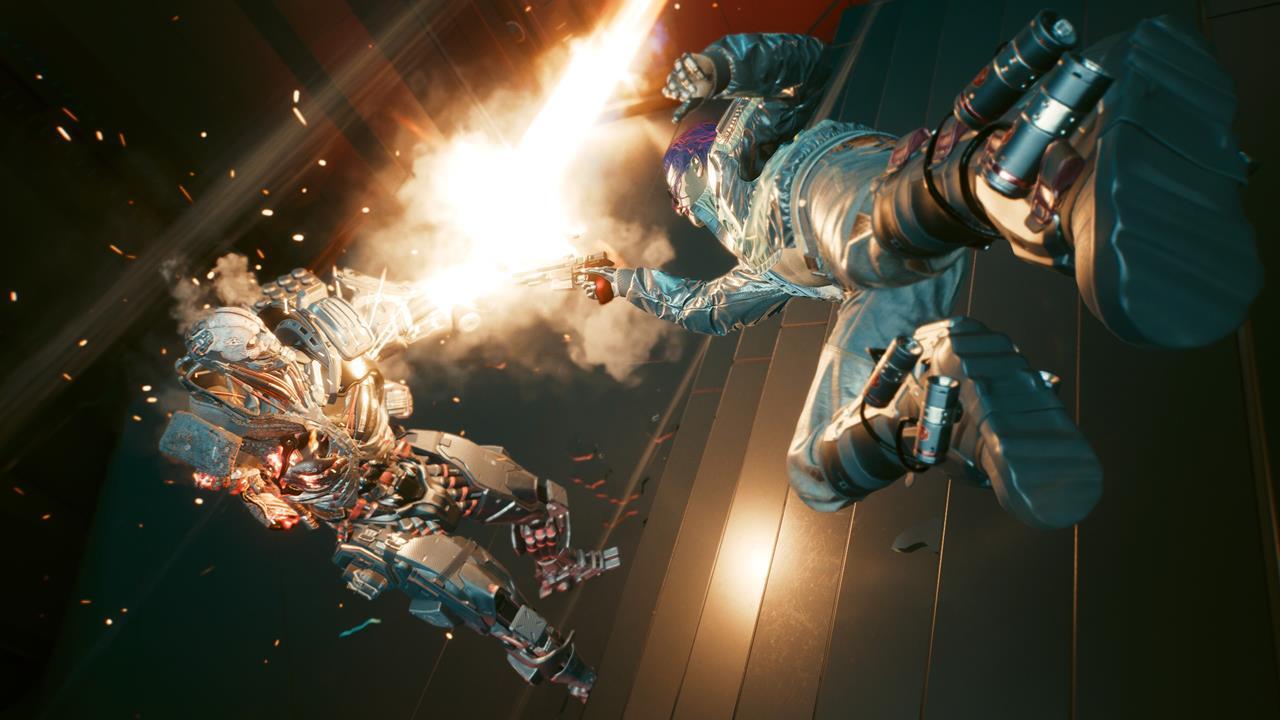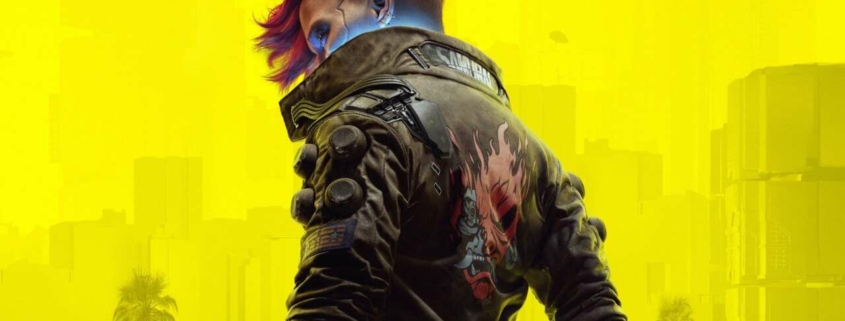Best Of 2022: Cyberpunk 2077’s Redemption Arc Is A Breathtaking Return To Form For CD Projekt Red


It’s December 2020, and Cyberpunk 2077 is about to make headlines for all the wrong reasons. Arriving on store shelves eight years after it was first announced, Cyberpunk 2077 had all the momentum in the world to help it close out the year in blockbuster style. With developer CD Projekt Red having earned plenty of goodwill from its work on The Witcher trilogy, the idea of the studio working on a cult-classic IP combined with a Keanu Reeves show-stealing E3 moment made for one of the most highly anticipated game debuts of all time.
Come launch day, it was a different story. While PC reviews mostly praised the game, they came with a gigantic asterisk attached that could be seen from orbit as Cyberpunk 2077 was crawling with bugs, destructive glitches, and a world that felt half-baked at best. Fascinating game features that had previously been shown off in trailers, like using wall-running to get an acrobatic drop on enemies, were missing from the final release.
Console gamers bore the brunt of Cyberpunk 2077’s shortcomings, as the game was barely playable on last-gen PS4s and Xbox Ones, while the newly launched PS5 and Xbox Series X|S hardware also had to deal with plenty of problems.

If you were following the game, you likely saw stories detailing the litany of issues plaguing the game, ranging from the neon streets of Night City randomly breaking and faceless NPCs, to broken missions, and the odd car falling from the sky. It only got worse for CDPR as its reputation took a battering at the time, leading to an unprecedented move by Sony and Microsoft to not only offer refunds to its consumers, but to keep Cyberpunk 2077 off of their respective digital store shelves for the next several months.
While Cyberpunk 2077 is hardly the first high-profile game to arrive in a less-than-ideal state (Fallout 76 being a notable example here), the years of patience, hype, and sizzling previews resulted in a demoralizing return to reality for anyone who had been excited for the chance to play as a rebel in a dark future. The elevator pitch for Cyberpunk 2077 was solid and pure escapism, but the reality of the game was a bubble-pop of depression for a variety of reasons, as stories of crunch culture and behind-the-scenes drama would be made public in the weeks to come.
Since those turbulent days, though, Cyberpunk 2077 has become an entirely different beast that feels more representative of CDPR’s original vision. It’s not perfect–one recent session saw my prized motorcycle reach orbit after it hit a pebble on the road–but frequent updates have helped improve the experience tremendously. Cyberpunk 2077’s bugs, when they occur, are now something to laugh at instead of shake your fist at.
It’s an example of course correction by a studio that worked hard behind the scenes to not only fix the game but to create a product that has the potential to become a classic and proud part of its history. CDPR’s initial moves saw massive bandwidth-busting patches released in the aftermath of Cyberpunk 2077’s launch, while paid expansion plans were put on hold so that the game could be whipped into better shape. March 2021’s 1.2 update, for example, took the entire game apart for its most consequential overhaul at the time, further optimizing the experience on a macro and micro scale with hundreds of tweaks and substantial changes.
This update wasn’t a cure-all for Cyberpunk 2077 and its lingering bugs, but it was a huge leap forward compared to the initial launch-day version of the game. Dragon Age: Inquisition design director Gabriel Amatangelo had joined CD Projekt in 2020 and was promoted from Cyberpunk 2077 creative director to game director as the game began drawing in a dedicated crowd of players. CD Projekt was undergoing an ambitious shake-up behind the scenes as it began developing multiple AAA games simultaneously.
Reports of crunch culture were damaging to CD Projekt Red’s reputation, with the company being lambasted for breaking its promise to provide “more humane” working conditions during the development of the game. Co-CEO Marcin Iwinski told investors after the September 2020 delay of Cyberpunk 2077 that reports of crunch on the game’s development were “not that bad,” but he later had to walk back and apologize for those comments to CDPR staff.

The director of the upcoming Witcher game, Jason Slama, later tried to downplay fears of mandatory crunch practices. “Never on my watch,” Slama said in response to a tweet regarding CDPR’s poor track record when it comes to crunch, promising better conditions for those hired to work on the new title. CD Projekt Red has made an effort to change its workplace culture since the launch of Cyberpunk 2077, as a 2021 strategy update said that the studio was “working hard to minimize stress, prevent burnout, and give our employees everything all they need to focus on the work with a fully positive mindset.”
Just how effective those policy changes will be in the face of multiple ongoing projects remains to be seen, as CDPR still has fresh memories of the disastrous Cyberpunk 2077 launch that left many fans disappointed in the company after they purchased a broken game on day one.
With the game’s foundation secured, Cyberpunk 2077’s development team began working on fixing any leftover cracks. A return to the PlayStation Store saw positive download numbers, more substantial patches, and plenty of free content to draw players in. It had taken a year to get to this point, and the best was yet to come.
All of that technical work behind the scenes got Cyberpunk 2077 back into fighting shape, with February 2022’s next-gen 1.5 update being a seismic shift for the game in terms of stability, performance, and power on current-gen PS5 and Xbox Series X|S consoles. Not just a technical upgrade, this was the update that retuned the Cyberpunk experience with new cybernetic modifications, more cunning enemy AI, improved romance options, and tweaked driving controls.
The 1.5 update was a shot in the arm that the game needed to move beyond its turbulent launch-day history, but arguably the biggest moment for Cyberpunk 2077 came from the debut of an anime spin-off series that helped put it back on the mainstream map. Cyberpunk: Edgerunners, a beautifully animated show produced by Kill la Kill’s Studio Trigger and released on Netflix in late 2022, helped drive millions of people back to Night City with its high-quality production values.

With animation sharper than a freshly-forged pair of Mantis blades, a terrific voice cast for the dub, and the best use of Franz Ferdinand since “Take Me Out” became an omnipresent track on the 2004 billboard charts, Edgerunners helped transform Cyberpunk 2077’s fortunes. CDPR also struck while the cyber-iron was hot, revealing a final major patch that added a few Edgerunners Easter eggs for fans to discover.
All of these changes helped transform the fabric of Night City, making the urban sprawl feel exciting to explore as opposed to when it ran like a broken Matrix simulation. A wildly ambitious game, Cyberpunk 2077 lives up to its techno-fantasy ideals with riveting storytelling, deep levels of customization, and the freedom to become a legend on your own terms.
In its current form, Cyberpunk 2077 is a thrilling ride, a world where you establish your own legend while listening to Keanu Reeves chew up all the available scenery as Johnny Silverhand, arguably his finest role since Always Be My Maybe. Night City is a hellhole of body-harvesting bandits and corrupt politicians, an incredible sandbox with a fresh story around every corner and gameplay flexibility that allows you to hack your way to victory in both digital and grisly fashion.
Eight years of development and two years of post-launch support later, Cyberpunk 2077’s successes outweigh its failures. It has a cool factor that few games can equal–a grim and dark aesthetic where neon lights slowly bleed into a world that has been positively transformed by its Netflix boost and players willing to take a second chance on CDPR’s grand vision for the IP. It can’t be easy for a studio to watch a hype train derail and be hit with harsh criticism on an industry-defining scale, but CDPR rolled with the punches, scraped away Cyberpunk 2077’s most problematic issues, and continued to work on creating one of the most fascinating sandboxes to ever appear on PC or console.
From controversy to critical acclaim, Cyberpunk 2077 in its current form isn’t just the game that fans were expecting in 2020; it’s a better realized showcase of some of CDPR’s outstanding talent for storytelling, surprisingly tender moments, and renegade action with deep layers of customization that reflects your Night City character’s approach to problem-solving. It remains to be seen how effective CDPR will be in avoiding crunch and bug-riddled launches in the future. But on paper the future looks bright, as The Phantom Liberty expansion will introduce players to a new side of Night City–with Idris Elba along for the ride—and a fully-fledged sequel is in the early stages of development.
The products discussed here were independently chosen by our editors. GameSpot may get a share of the revenue if you buy anything featured on our site.
Source link




